The Furniture City
Introduction
Text-to-speech Audio
Images
The official city flag of Grand Rapids, adopted in 1896
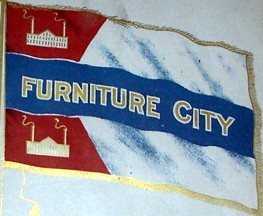
A historical marker in front of the Grand Rapids Public Museum at the corner of Pearl and Front Streets tells the story of the Furniture City
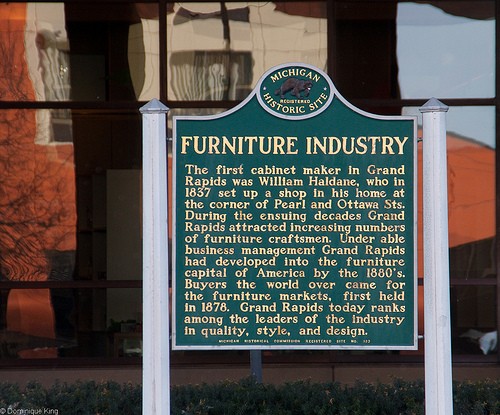
A Berkey & Gay Company Showroom in 1880
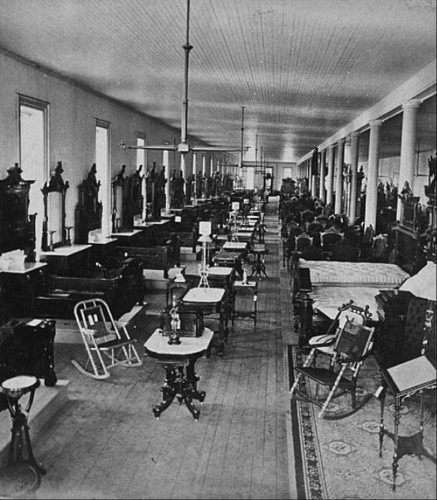
The Grand Rapids School Furniture Company, which would become the American Seating Company, revolutionized the industry with their foldable seats and desk/bench combos
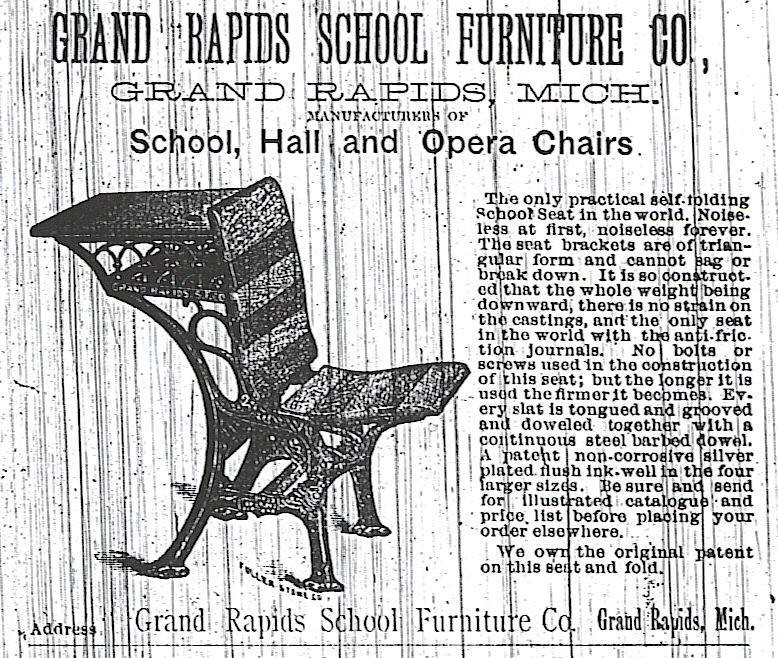
The Phoenix Factory, one of the major furniture manufacturers in the city
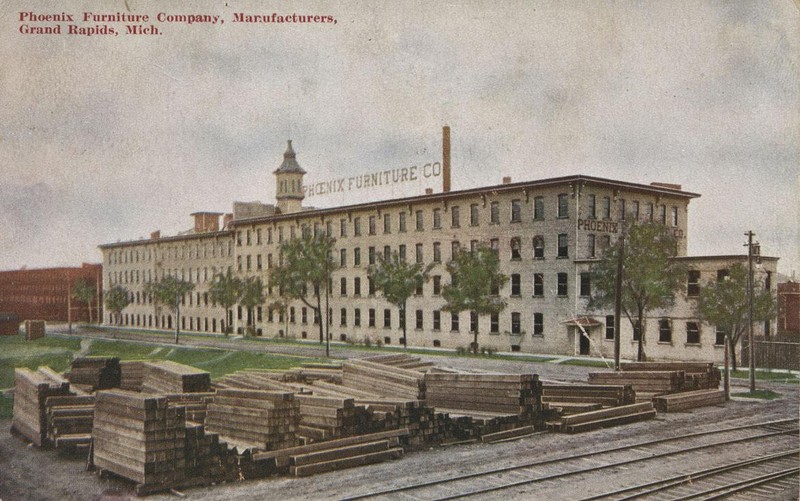
The John Widdicomb Company building still stands today
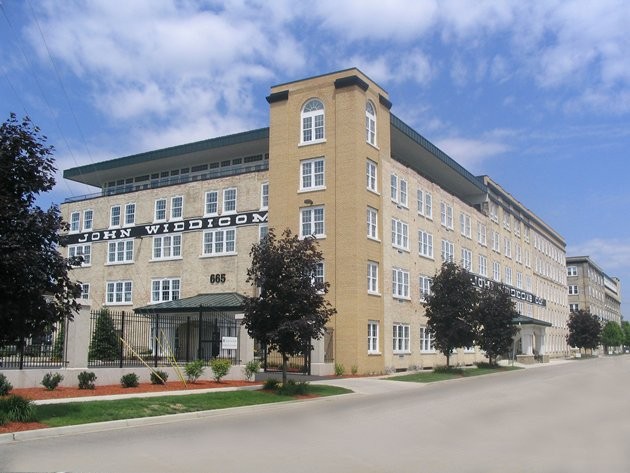
A Widdicomb advertisement
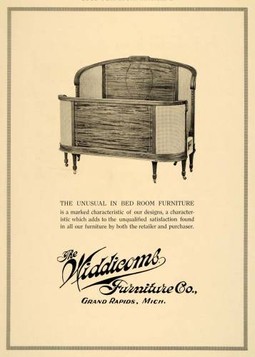
The Grand Rapids name was so well-known that local manufacturers trademarked to prevent furniture-makers from out of state trying to capitalize on it. Furniture marked with the red triangle and "GRM" to the left in this advertisement guaranteed that the p
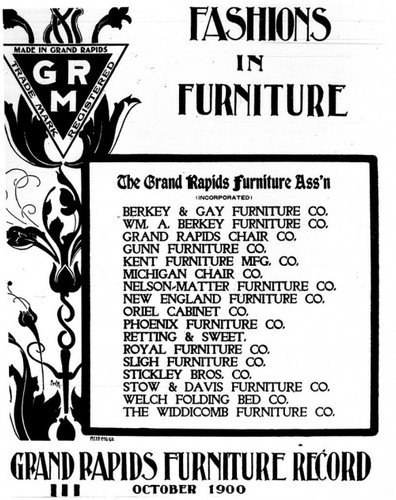
Colorful catalogs showcasing furniture pieces and sets were an innovative new way for manufacturers to sell their products.
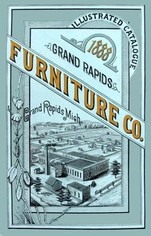
A 1973 Steelcase catalog. Steelcase was able to survive and thrive as a company by producing metal office furniture after other companies that made wooden furniture shut down. Steelcase is still headquartered in Grand Rapids and is the largest manufacture
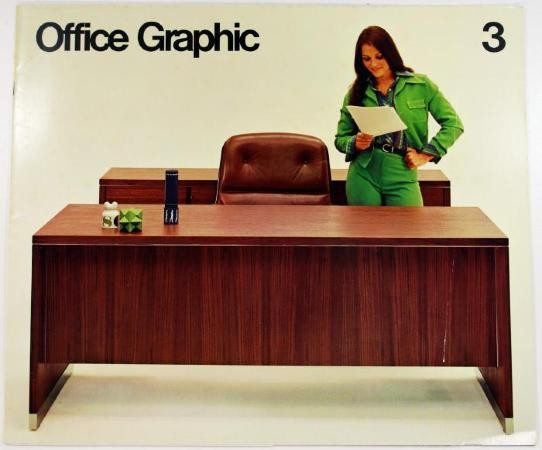
Grand Rapids used to host furniture markets twice a year. The Waters Building was the largest furniture exhibition hall in the world when it opened in 1898. It still stands today as hotel and apartment space.
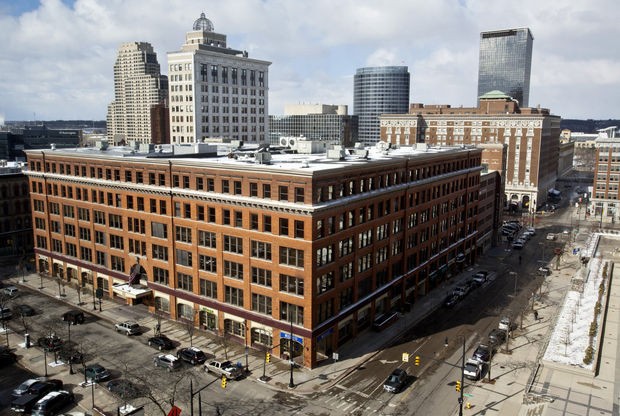
A memorial statue in front of the Ford Presidential Museum, dedicated to those who fought for better working conditions in the 1911 furniture factory strike

Backstory and Context
Text-to-speech Audio
Immigrants who settled in the city from the Netherlands, Germany, Poland, and Lithuania often had fine woodworking skills and possibly contributed to the beautiful, quality designs that made Grand Rapids furniture so popular.4 John Widdicomb followed Ball in the industry, and the John Widdicomb Company still exists today. Another famous name in the industry was the Berkey brothers, Julius and William, whose company and partnerships changed over time until it was the prestigious Berkey & Gay Co.
In the beginning, furniture had to be shipped by wagon or down the Grand River to Grand Haven, and then out across Lake Michigan to Chicago and beyond. In 1858, Grand Rapids became a stop on the Detroit-Milwaukee Railroad, and business opportunities instantly expanded with this new shipping option. 1876 was a pivotal year for the Furniture City. An impressive display of elaborately-carved Renaissance Revival furniture from Berkey & Gay at the Philadelphia Centennial Exposition that year cemented Grand Rapids as the premier name in furniture quality and design.
The booming years for the furniture industry in Grand Rapids was from approximately 1870 to 1930. A demand for ornate bedroom and upholstered parlor “suites” or sets or furniture increased in the Victorian era, as they emulated European nobility and became symbols of a refined, increasingly wealthy society in the United States.1 During that time, about one-third of Grand Rapids’ workers were employed in some aspect of the furniture-making process.4 Thousands of buyers came to the city for furniture markets and to view the displays at showrooms and exhibition halls. The city grew to accommodate these many visitors with hotels, restaurants, and shops.
Colorful catalogs with photographs and illustrations of furniture were an innovative marketing tool used by Grand Rapids manufacturers at the time. Furniture companies began using Grand Rapids as a trademark itself, to distinguish it from other companies who were trying to bank on the name. There were several lawsuits over out-of-state companies using the Grand Rapids name for their inferior products. From 1899 to 1913, all furniture was marked with a red triangle logo with “GRM,” indicating that the piece was truly made in Grand Rapids.3
The logging industry died away with the depletion of the native forests around 1900, and wood sometimes had to be imported. Factory workers suffered from decreasing wages, long hours, and dismal working conditions. In April 1911, more than 6,000 workers walked out of the factories on strike. After several months, the strike did have some success in improving conditions for workers, but the industry was permanently weakened.5 The height of the furniture industry was over by the 1930s, as the Great Depression hit. Fine wood furniture was no longer in high demand, but a new market opened up with as metal office furniture replaced wood. Steelcase, Inc, founded in Grand Rapids in 1912 and with its global headquarters still in the city, is the largest manufacturer of office furniture in the world. The American Seating Company, a large producer of public and institutional seating, has also been headquartered in the city since it began as the Grand Rapids School Furniture Company in 1886.5
Today, the legacy of Furniture City continues, albeit on a smaller scale. A permanent exhibit in the Grand Rapids Public Museum showcases the history of the furniture industry, with recreations of a furniture factory and 1920s-era showroom on display, as well as hundreds of examples of groundbreaking furniture pieces in its collection. According to the state historical marker in front of the museums: “Grand Rapids today ranks among the leaders of the industry in quality, style, and design.”
